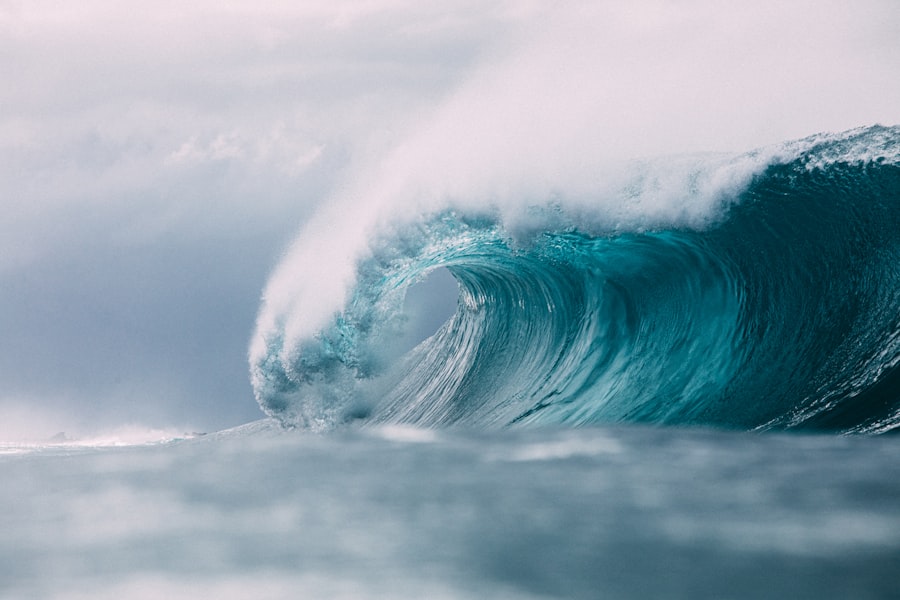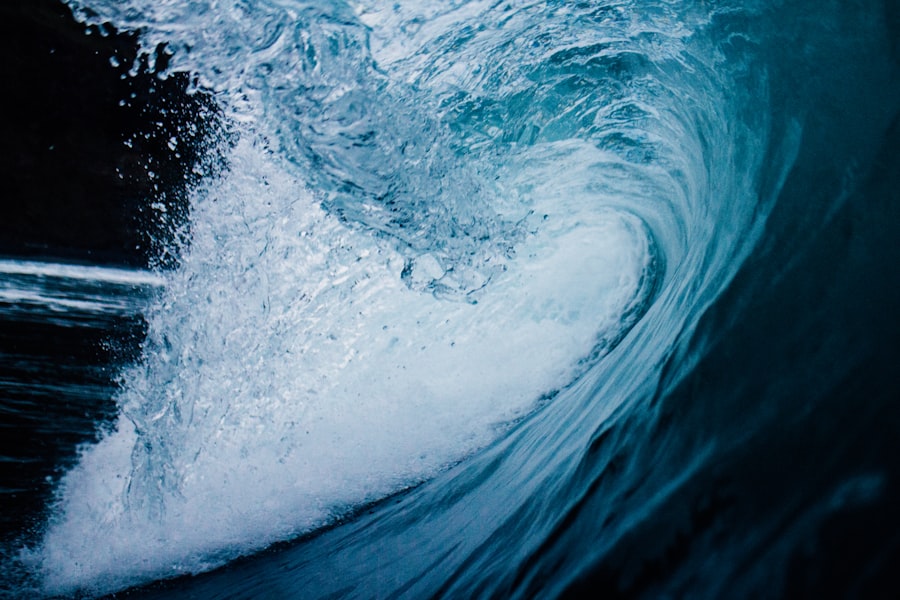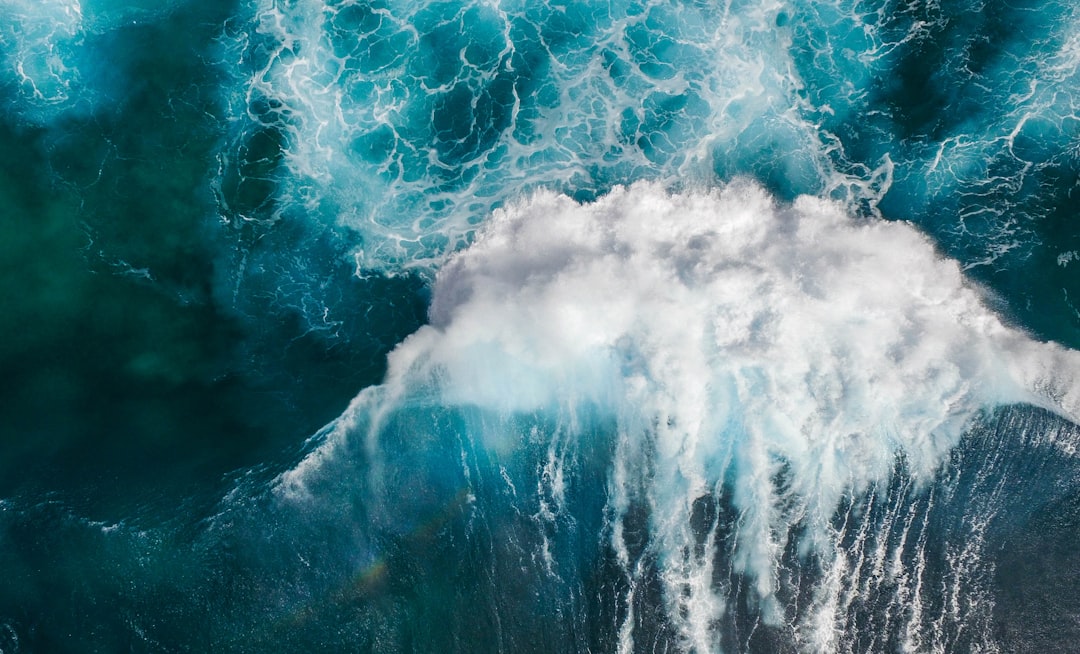The Drake Passage, a body of water that separates South America from Antarctica, is renowned for its tumultuous seas and unpredictable weather patterns. Stretching approximately 600 miles, this passage is often regarded as one of the most challenging maritime routes in the world. The confluence of the Atlantic and Pacific Oceans creates a unique environment where strong currents and fierce winds converge, resulting in large swells and rough seas.
For many adventurers and researchers alike, traversing the Drake Passage is not merely a journey; it is a rite of passage that tests the mettle of even the most seasoned sailors. The historical significance of the Drake Passage cannot be overstated. Named after Sir Francis Drake, who navigated these waters in the late 16th century, it has long been a critical route for explorers and scientists seeking to understand the Antarctic region.
The passage serves as a gateway to the pristine landscapes of Antarctica, where icebergs float majestically and wildlife thrives in its natural habitat. However, the beauty of this remote area is often overshadowed by the challenges posed by its waters. Understanding the dynamics of the Drake Passage is essential for anyone planning to embark on a journey through this formidable stretch of ocean.
Key Takeaways
- The Drake Passage is a challenging stretch of water between South America and Antarctica known for its rough seas and strong winds.
- Proper preparation for the journey through the Drake Passage is essential, including packing appropriate clothing and gear for the harsh conditions.
- Navigating large waves in the Drake Passage requires a skilled and experienced crew, as well as a sturdy and well-maintained vessel.
- Safety measures on board, such as regular safety drills and the availability of life jackets and life rafts, are crucial for ensuring the well-being of passengers and crew.
- Effective communication with the crew is important for receiving updates on weather conditions and any changes to the itinerary.
Preparing for the Journey
Preparation is key when embarking on an expedition across the Drake Passage. Travelers must equip themselves with not only the right gear but also a solid understanding of what to expect during their voyage. The first step in this preparation involves thorough research about the passage itself, including its weather patterns, potential hazards, and the types of vessels that are best suited for such a journey.
Knowledge about the region can significantly enhance one’s experience, allowing travelers to appreciate the beauty and challenges that lie ahead. In addition to research, physical preparation is equally important. The journey across the Drake Passage can be physically demanding, and travelers should ensure they are in good health before setting sail.
Engaging in regular exercise, maintaining a balanced diet, and staying hydrated can help individuals build stamina for the trip. Furthermore, packing appropriate clothing is crucial; layers are essential to accommodate fluctuating temperatures and varying weather conditions. Waterproof gear, thermal layers, and sturdy footwear will ensure that travelers remain comfortable and protected throughout their adventure.
Navigating Large Waves

As travelers set sail into the Drake Passage, they quickly become acquainted with the reality of navigating large waves. The passage is notorious for its steep swells that can reach heights of up to 30 feet or more. These waves are not only daunting but can also pose significant challenges for vessels attempting to traverse them.
Understanding how to navigate these large waves is crucial for both safety and comfort during the journey. Experienced crew members often employ various techniques to manage large waves effectively. One common strategy involves adjusting the ship’s speed and angle to minimize the impact of incoming swells.
By positioning the vessel at an optimal angle, crew members can reduce the risk of capsizing or taking on water. Additionally, maintaining a steady course while allowing the ship to ride over waves can help mitigate discomfort for passengers.
Safety Measures on Board
| Category | Metric |
|---|---|
| Life Jackets | Number of life jackets available |
| Fire Extinguishers | Number of fire extinguishers on board |
| Emergency Exits | Number of emergency exits |
| First Aid Kits | Number of first aid kits available |
| Emergency Drills | Frequency of emergency drills conducted |
Safety measures on board are paramount when traversing the unpredictable waters of the Drake Passage. Every vessel should be equipped with essential safety equipment, including life jackets, lifeboats, and emergency beacons. Crew members undergo rigorous training to ensure they are prepared for any situation that may arise during the journey.
Regular safety drills are conducted to familiarize passengers with emergency procedures, ensuring that everyone knows what to do in case of an unexpected event. In addition to standard safety equipment, modern vessels often incorporate advanced technology to enhance safety on board. This includes radar systems for navigation, weather monitoring tools, and communication devices that allow for real-time updates on changing conditions.
Passengers are encouraged to familiarize themselves with these systems and understand their importance in maintaining safety throughout the journey. By prioritizing safety measures, both crew and passengers can enjoy a more secure experience while navigating the Drake Passage.
Communication with the Crew
Effective communication with the crew is vital during any maritime journey, especially when traversing challenging waters like those found in the Drake Passage. Crew members play a crucial role in ensuring passenger safety and comfort, and open lines of communication can significantly enhance the overall experience. Passengers should feel empowered to ask questions and express any concerns they may have regarding their journey.
Crew members are trained not only in navigation and safety protocols but also in customer service skills. They are often more than willing to share their knowledge about the passage, providing insights into its history, geography, and wildlife. Engaging with crew members can enrich the journey, as they offer valuable information that enhances passengers’ understanding of their surroundings.
Adapting to the Motion of the Ship

Adapting to the motion of the ship is an essential skill for anyone embarking on a journey across the Drake Passage. The constant rocking and rolling of a vessel can be disorienting for some passengers, particularly those who are not accustomed to maritime travel. Learning how to move with the ship rather than against it can help individuals maintain their balance and comfort during rough seas.
One effective technique for adapting to motion involves using handrails and other support structures throughout the vessel. Passengers should take care to walk slowly and deliberately, allowing their bodies to adjust to shifts in momentum. Additionally, finding a stable position—such as sitting or standing near the center of the ship—can help minimize discomfort caused by swaying movements.
By becoming attuned to the ship’s motion, travelers can enhance their overall experience while navigating through the Drake Passage.
Coping with Seasickness
Seasickness is a common concern for many travelers embarking on a journey across the Drake Passage. The combination of large waves and constant motion can lead to feelings of nausea and discomfort for even seasoned sailors. However, there are several strategies that individuals can employ to cope with seasickness effectively.
One popular method involves taking preventive measures before setting sail. Over-the-counter medications designed to alleviate motion sickness can be taken prior to departure, helping to minimize symptoms during rough seas. Additionally, natural remedies such as ginger or acupressure wristbands have been known to provide relief for some individuals.
Staying hydrated and consuming light snacks can also help settle an upset stomach while at sea. For those who do experience seasickness during their journey, finding a comfortable spot on board is crucial. Many passengers find relief by spending time on deck where fresh air can help alleviate symptoms.
Focusing on a fixed point on the horizon can also assist in stabilizing one’s sense of balance. By employing these coping strategies, travelers can navigate through their discomfort and fully embrace their adventure across the Drake Passage.
Utilizing Safety Equipment
Utilizing safety equipment effectively is essential for ensuring a secure experience while navigating through the Drake Passage. Every vessel is equipped with various safety devices designed to protect passengers in case of emergencies. Familiarizing oneself with this equipment before setting sail can provide peace of mind and enhance overall safety during the journey.
Life jackets are perhaps the most recognizable piece of safety equipment on board any vessel. Passengers should take time to locate their life jackets upon boarding and understand how to wear them properly in case of an emergency. Additionally, lifeboats are strategically placed around the ship; knowing their locations and how to access them quickly can be crucial during unforeseen circumstances.
Crew members are always available to provide guidance on using safety equipment effectively, ensuring that passengers feel confident in their ability to respond if needed. Moreover, modern vessels often come equipped with advanced technology such as emergency beacons and communication devices that enhance safety measures on board. These tools allow crew members to communicate with other vessels or shore stations in case of emergencies or severe weather conditions.
Passengers should take advantage of any safety briefings provided by crew members to gain a comprehensive understanding of how these systems work and their importance in maintaining safety throughout their journey across the Drake Passage.
Seeking Shelter in Bad Weather
When traversing the unpredictable waters of the Drake Passage, seeking shelter during bad weather becomes imperative for both safety and comfort. The passage is notorious for sudden storms that can arise without warning, bringing high winds and turbulent seas that pose significant risks for vessels at sea. Knowing when and how to seek shelter is crucial for ensuring a safe journey.
Most modern vessels are equipped with designated areas where passengers can find refuge during inclement weather conditions. These sheltered spaces are designed to provide comfort while minimizing exposure to harsh elements outside. Crew members are trained to monitor weather conditions closely and will often provide updates regarding any impending storms or rough seas.
Passengers should remain attentive to these announcements and follow crew instructions regarding seeking shelter when necessary. In addition to physical shelter within the vessel, passengers should also consider mental preparedness when facing bad weather at sea. Understanding that rough conditions are part of navigating through the Drake Passage can help individuals maintain a positive mindset during challenging moments.
By focusing on safety protocols and trusting in the expertise of crew members, travelers can navigate through adverse weather conditions with confidence.
Monitoring Weather Conditions
Monitoring weather conditions is an essential aspect of any maritime journey, particularly when traversing challenging waters like those found in the Drake Passage. The unpredictable nature of this passage means that weather patterns can change rapidly, impacting both navigation and passenger comfort. Crew members utilize advanced technology such as radar systems and satellite communications to stay informed about current conditions at sea.
Passengers are encouraged to stay informed about weather updates throughout their journey as well. Many vessels provide real-time information regarding changing conditions via announcements or digital displays onboard. Understanding how weather impacts sailing routes allows travelers to appreciate their surroundings better while also preparing for any potential challenges ahead.
Additionally, being aware of weather patterns can enhance passengers’ overall experience during their voyage across the Drake Passage. For instance, spotting wildlife or witnessing stunning ice formations may be more prevalent during certain weather conditions than others. By actively monitoring weather updates alongside crew members’ insights, travelers can engage more fully with their environment while navigating through this remarkable stretch of ocean.
Reflecting on the Experience
Reflecting on one’s experience after traversing the Drake Passage often leads to profound insights about both nature and personal resilience. The journey through this formidable body of water serves as a reminder of nature’s power and unpredictability while also highlighting human ingenuity in overcoming challenges at sea. Many travelers find themselves transformed by their experiences—gaining newfound appreciation for both adventure and tranquility found within such remote landscapes.
As individuals recount their journeys across the Drake Passage, they often share stories filled with awe-inspiring moments—whether it be witnessing majestic icebergs or encountering playful wildlife along their route. These memories become cherished tales that connect them not only with fellow travelers but also with nature itself—a bond forged through shared experiences amidst turbulent waters. Ultimately, reflecting on an expedition through this iconic passage encourages individuals to embrace future adventures with open hearts and minds—ready to face whatever challenges may arise while exploring our planet’s most breathtaking destinations.
The Drake Passage is notorious for its large and tumultuous waves, making it one of the most challenging maritime routes in the world. This treacherous stretch of water, located between the southern tip of South America and Antarctica, is a subject of fascination for many geographers and adventurers alike. For those interested in exploring more about the geographical significance and the challenges posed by the Drake Passage, you can read a related article on MyGeoQuest. This resource provides in-depth insights into the natural phenomena that characterize this formidable oceanic passage.
WATCH NOW! Drake Passage: Earth’s Deadliest Waters Revealed
FAQs
What are large waves in the Drake Passage?
Large waves in the Drake Passage are powerful and often unpredictable ocean swells that occur in the body of water between the southern tip of South America and the northern tip of the Antarctic Peninsula. These waves are known for their size and strength, making the passage one of the most challenging maritime routes in the world.
How large can the waves in the Drake Passage get?
The waves in the Drake Passage can reach heights of up to 30 meters (98 feet) during extreme weather conditions. These massive waves are a result of the strong winds and currents that converge in the passage, creating a treacherous environment for ships and other vessels.
What causes the large waves in the Drake Passage?
The large waves in the Drake Passage are primarily caused by the combination of strong westerly winds and the Antarctic Circumpolar Current. The narrowness of the passage and the lack of landmasses to break up the waves also contribute to their size and power.
Are large waves in the Drake Passage dangerous?
Yes, the large waves in the Drake Passage are considered extremely dangerous for maritime travel. The combination of their size, strength, and unpredictability poses significant risks to ships and other vessels navigating the passage. Mariners must exercise caution and be well-prepared when traversing this challenging maritime route.
How do ships navigate through the large waves in the Drake Passage?
Ships navigating through the large waves in the Drake Passage often rely on experienced captains and crew, as well as advanced navigational equipment and technology. Additionally, some vessels may choose to alter their routes or timing to avoid the worst of the waves during severe weather conditions.
